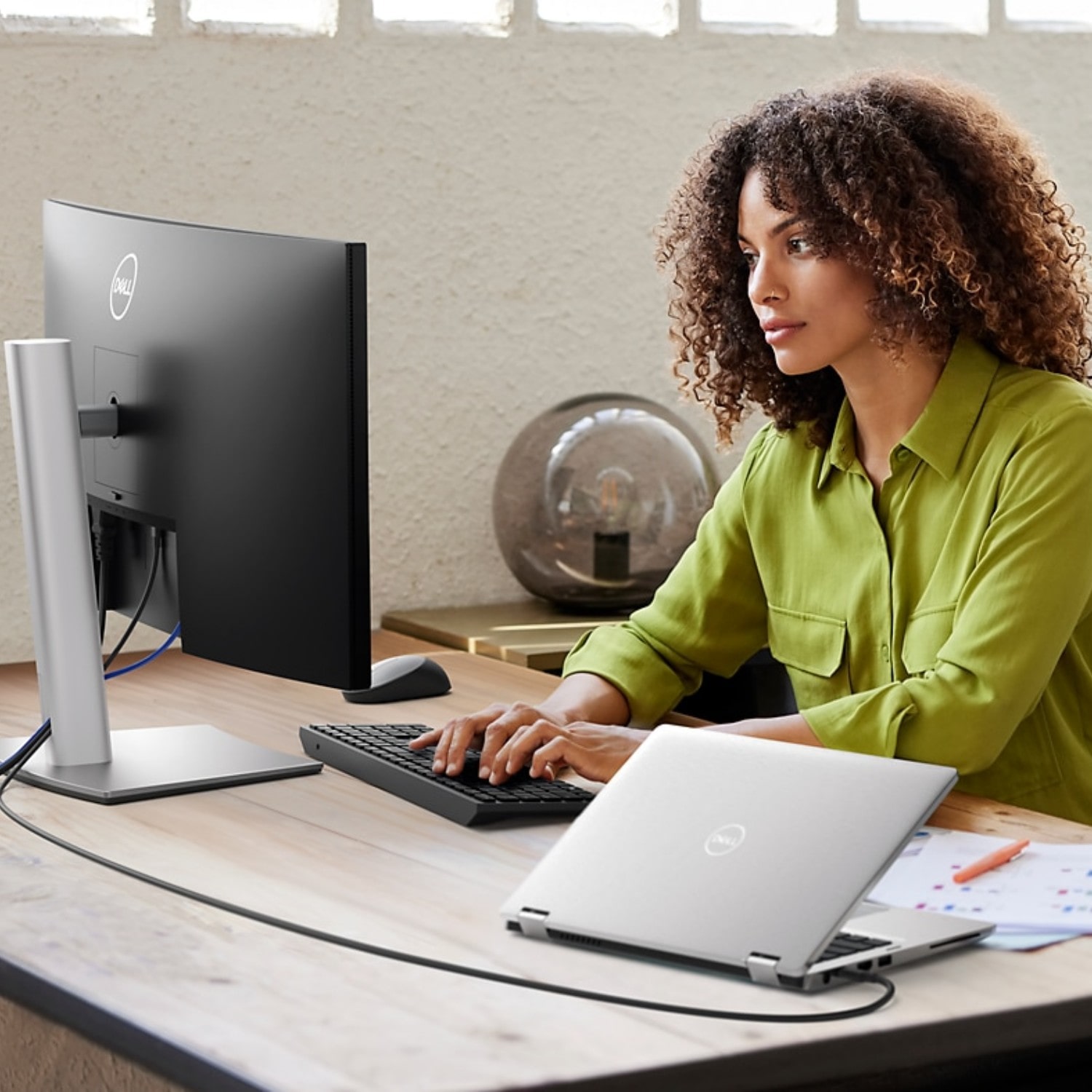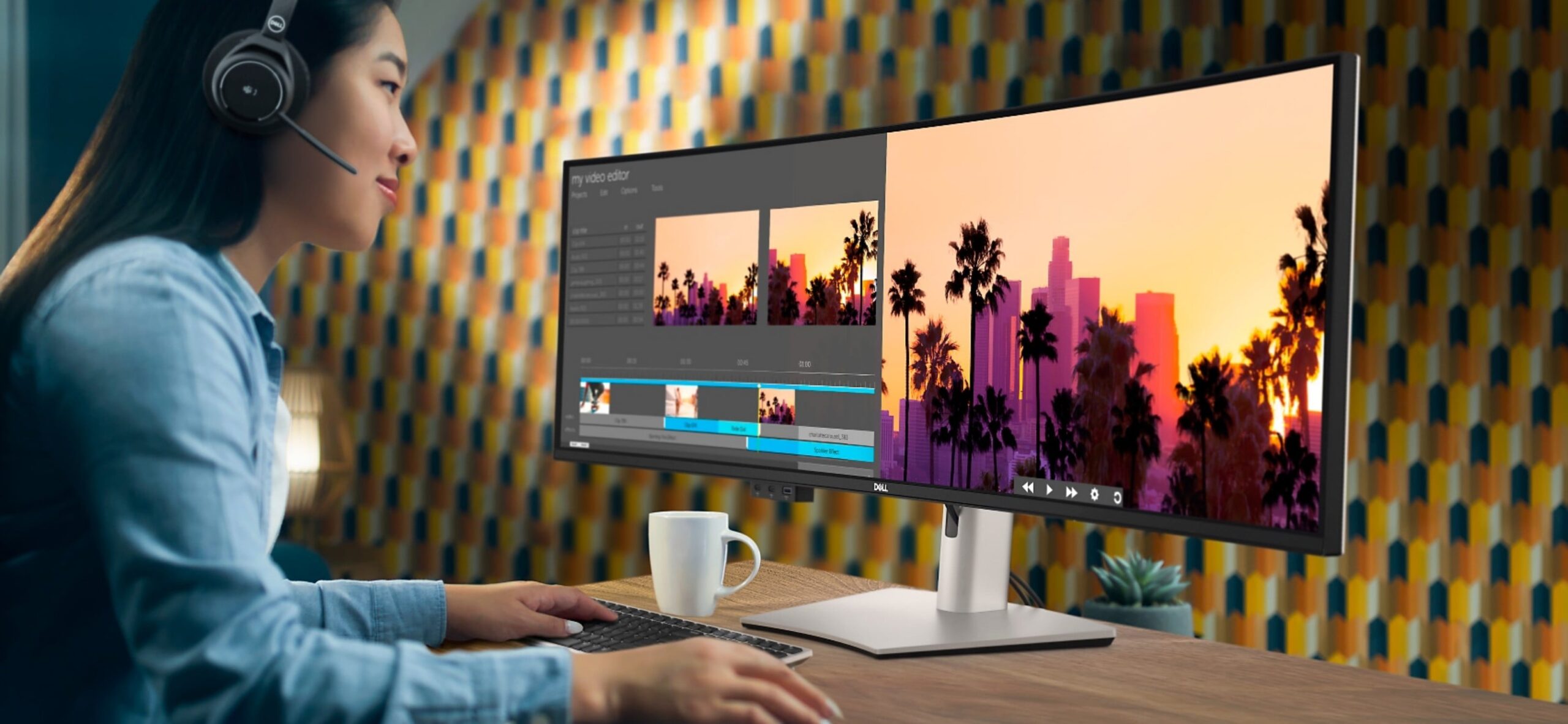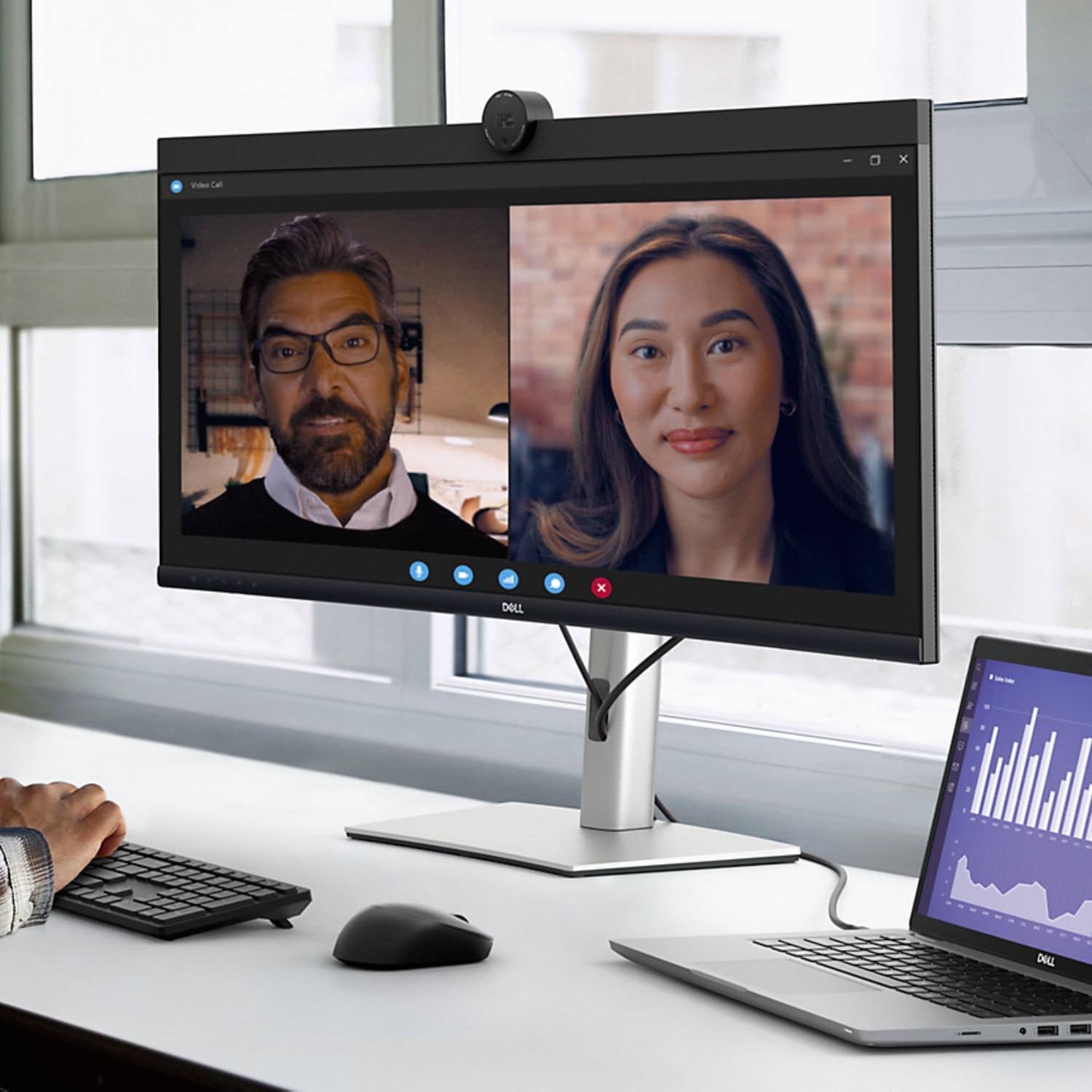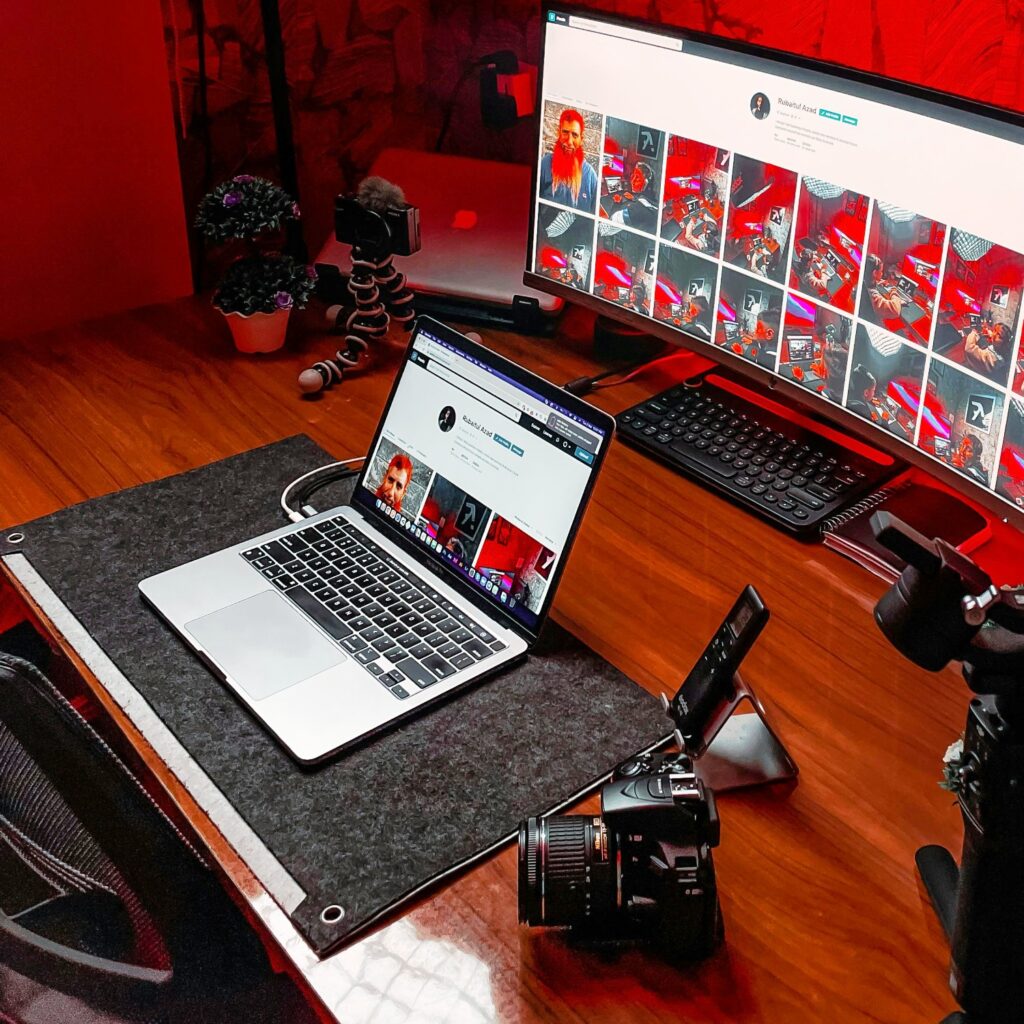Are wide curved monitors worth it for office work? When considering the best monitor for productivity, the unique design of a wide curved monitor can make a significant difference.
Wide curved monitors offer a wider field of view, allowing users to see more information on the screen at once. This increased peripheral vision can be particularly beneficial for multitasking, making it easier to switch between different applications and windows without feeling overwhelmed.
The curve of the screen provides a more immersive viewing experience, leading to enhanced focus and reduced eye strain during long hours of work.
In addition to their practical benefits for office work, wide curved monitors are also popular among gamers for their immersive experience. The curvature of the screen creates a sense of depth that flat monitors cannot replicate, enhancing the gaming experience and providing a more realistic display.
Brands like Samsung and Dell offer a variety of wide curved monitors, with options ranging from Full HD to 4K resolution and HDR support. Whether you are a professional looking to boost productivity or a gamer seeking a more immersive experience, a wide curved monitor can be a worthwhile investment for your office setup.
What Makes Curved Monitors Stand Out?
Curved monitors offer a unique viewing experience due to their wide field of view and immersive curvature, making them stand out in the market. The curve of the monitor enhances peripheral vision and provides a more ergonomic viewing angle compared to flat monitors.
Curved monitors are especially popular among gamers for their ultrawide display and enhanced graphics, which create a more immersive gaming setup. The curvature of the screen reduces eye strain by matching the natural curvature of the human eye.
One of the key benefits of curved monitors is their ability to offer a more immersive gaming experience with better color accuracy and viewing angles.
The curvature of the monitor also helps to reduce eye strain, making it ideal for long gaming sessions or video editing tasks.
When compared to flat monitors, curved monitors are known for their superior viewing experience and improved productivity in both office and home office settings. The ultrawide aspect ratio of curved monitors allows for better multitasking and enhanced work efficiency.
Leading brands like Samsung and Dell offer a range of curved monitors with features such as HDR and 4K resolution, catering to different user preferences. Ultrawide monitors with USB-C connectivity are also gaining popularity for their versatility in connecting multiple devices and creating a seamless work environment.
However, it’s important to consider the cons of curved monitors, such as compatibility issues with some graphics cards and the higher cost compared to flat screens.
Ultimately, the decision to choose a curved monitor over a flat one depends on individual preferences and the intended use of the monitor.
Are Curved Monitors Better Than Flat for Office Productivity?
When it comes to choosing between curved and flat monitors for office productivity, the curved display is gaining popularity for its immersive viewing experience.
Here’s why curved monitors may be better suited for office use:
- Curved screens, such as ultrawide monitors, offer a more expansive and engaging viewing experience, making it easier to see everything on the screen.
- The curvature of the monitor, such as in a 34-inch Dell ultrawide monitor, allows you to focus directly in front, reducing strain on your eyes.
- Curved monitors, like the 27-inch widescreen monitor, create a more comfortable viewing angle, especially when you have windows open or need to multitask.
- In comparison to flat displays, curved monitors increase productivity by providing more screen for multitasking or working with multiple windows open.
- For tasks that require attention to detail, such as editing or design work, the curved monitor setup offers a more seamless viewing experience.
- When it comes to gaming, curved monitors often offer a more immersive and engaging experience, particularly in fast-paced gaming scenarios.
- Whether you opt for one ultrawide monitor or two monitors, the curved display can provide a greater sense of continuity and cohesion in your workspace.
- The 4k resolution and 1800R curvature of a curved monitor, like the Samsung Odyssey G9, deliver stunning visuals and a more dynamic viewing experience.
The choice between curved and flat monitors ultimately depends on individual preferences and tasks at hand. However, for office productivity and immersive viewing experiences, the curved monitor may be the better option.

The Ergonomic Benefits of Curved Monitors for Office Work
Curved monitors have gained popularity in office settings due to their ergonomic advantages and enhanced viewing experience. The gentle curve of these ultra-wide monitors promotes a more natural viewing angle which reduces eye strain and improves overall comfort during long work periods.
- Curved monitors provide a wider field of view compared to traditional flat screens, allowing users to see more content without having to constantly shift their focus.
- The curvature of the monitor mimics the natural curvature of the human eye, ensuring that all areas of the screen are equidistant from the viewer’s eyes. This reduces the need for constant head movements and minimizes neck and shoulder strain.
- Ultra-wide curved monitors are particularly beneficial for multitasking, as they allow users to have multiple windows open simultaneously without sacrificing readability or visual comfort.
- When compared to flat screens, curved monitors offer a more immersive viewing experience, especially when watching movies or playing games that support the ultrawide format.
- The gentle curve of a curved monitor also helps to reduce reflections and glare from ambient lighting, enhancing visibility and reducing eye fatigue.
- Curved monitors are available in various sizes, including 27-inch and 32-inch options, as well as higher resolutions such as 4k, making them suitable for a wide range of tasks and preferences.
- Some popular monitor brands like Dell offer curved gaming monitors that provide a seamless and immersive gaming experience, with vibrant colors and smooth motion for enhanced gameplay.
- For office workers looking to optimize their workspace, a curved monitor can help save space on your desk by offering a more compact footprint compared to multiple smaller monitors.
The ergonomic benefits of curved monitors vary from person to person, but for those looking to enhance their productivity and comfort while working on a single monitor, the curved design can have a positive impact.
Weighing the Pros and Cons of Curved Monitors for Office Work
Curved monitors have gained popularity for various uses, including office work, due to their unique design and perceived benefits. Here’s a detailed look at the pros and cons of using curved monitors in an office environment:
Pros of Curved Monitors for Office Work
- Enhanced Immersion:
- Natural Field of View: Curved monitors mimic the natural curve of the human eye, providing a more immersive and comfortable viewing experience. This can make tasks like reading documents and spreadsheets more engaging.
- Less Eye Strain: The curved design can reduce eye strain by allowing your eyes to take in the entire screen without having to move excessively, which is beneficial for prolonged use.
- Improved Viewing Angles:
- Consistent Image Quality: Curved monitors offer better viewing angles, reducing color and contrast shifts when viewed from different angles. This is particularly useful in collaborative environments where multiple people might be looking at the screen from different positions.
- Reduced Glare:
- Less Reflected Light: The curvature helps in minimizing reflections and glare from ambient light sources, enhancing visibility and reducing distractions.
- Enhanced Productivity:
- Wider Field of View: Many curved monitors come in ultrawide formats, providing more screen. This is advantageous for multitasking, as you can have multiple windows open side by side without the need for dual monitors.
- Improved Focus: The immersive nature of a curved monitor can help in maintaining focus on the tasks at hand, potentially boosting productivity.
Cons of Curved Monitors for Office Work
- Higher Cost:
- Premium Pricing: Curved monitors tend to be more expensive than their flat counterparts, which can be a significant factor for budget-conscious buyers or when outfitting an entire office.
- Desk Space Requirements:
- Larger Footprint: Curved monitors, especially the ultrawide versions, require more desk space. This can be an issue in smaller workspaces or where desk is limited.
- Potential Distortion:
- Image Warping: Some users may notice slight distortion in images and text, especially towards the edges of the screen. This can be a drawback for tasks that require precise visual accuracy, such as graphic design or detailed document editing.
- Compatibility Issues:
- Mounting and Ergonomics: Finding compatible stands and mounts can be more challenging for curved monitors. Additionally, achieving an ergonomic setup that fits all users’ needs may require more effort.
- Software Compatibility: Some software applications may not be optimized for the ultrawide resolutions common with curved monitors, potentially causing display issues or reduced functionality.
- Adjustment Period:
- Learning Curve: Users accustomed to flat screens might need time to adjust to the curved display, which can temporarily impact productivity.
Curved monitors offer several benefits for office work, including enhanced immersion, improved viewing angles, reduced glare, and potentially increased productivity.
However, they come with higher costs, larger space requirements, potential image distortion, compatibility issues, and an adjustment period for new users.
The decision to use curved monitors in an office setting should weigh these pros and cons against the specific needs and constraints of the workspace and the tasks being performed.
Are Curved Monitors Good for Reducing Eye Strain at Work?
Are curved monitors good for reducing eye strain at work? This question has been a topic of debate among OLED monitor enthusiasts and those who prefer traditional ultrawide. The key benefit of a curved monitor is its ability to provide a more immersive viewing experience by enveloping the viewer in the center of the screen. This can help reduce eye strain by making it easier for the eyes to focus on the content without having to constantly adjust focus.
When comparing a curved monitor with a flat 27-inch monitor, the former may offer a more comfortable viewing experience due to its curvature. A curved monitor can also have a positive impact on productivity by allowing the user to view multiple windows side by side without having to constantly move their head or eyes.
Curved monitors can be a great choice for reducing eye strain at work and improving overall comfort, especially if you spend long hours in front of a screen.
If you are in the market for a new monitor, consider investing in a curved 4K monitor for a visually stunning and immersive experience. Brands like Dell offer some of the best ultrawide monitors on the market, perfect for those who want to game or connect to a PC.
To enhance ergonomics, consider using a monitor arm to adjust the height and angle of your curved monitor for optimal viewing comfort. While curved monitors are good for reducing eye strain, it is important to take regular breaks and position your monitor at eye level to prevent long-term discomfort.
Monitors are good investments for your health and productivity, and purchasing through links may earn a small commission that helps support our content.

Are Wide Curved Monitors Worth the Investment for Office Work?
Yes, wide curved monitors are worth the investment for office work. They enhance productivity by providing increased screen, reducing the need for multiple monitors.
Additionally, they offer an immersive viewing experience that can reduce eye strain and improve focus. However, it’s important to consider factors such as cost, desk space requirements, and whether the specific tasks performed in your office will benefit from the extra screen space.
In recent years, there has been a growing trend towards using wide curved monitors in office settings. These monitors offer a unique visual experience that can enhance productivity and reduce eye strain.
Compared to traditional flat screens, curved monitors provide a more immersive viewing experience by wrapping the display around the user. This creates a more natural viewing angle and helps to reduce glare and reflections.
When it comes to multitasking, wide curved monitors offer significant advantages. With the extra screen, you can easily split your work into multiple windows without having to constantly switch between tabs.
Some may argue that ultrawide monitors are a better choice for office work, as they provide even more horizontal space than curved monitors. However, the curvature of the screen on curved monitors can actually help to enhance focus by drawing your eyes towards the center of the display.
For those who prefer a clean and organized workspace, using a single wide curved monitor can be more practical than setting up multiple screens. This reduces clutter and simplifies cable management.
One popular option in the wide curved monitor market is the Dell UltraSharp U3824DW. This monitor offers excellent color accuracy and wide viewing angles, making it ideal for professional use.
With the release of Windows 11, wide curved monitors are become even more popular. The new OS supports the advanced multitasking features that take full advantage of the extra screen space.
For office work, wide curved monitors can be a worthwhile investment. They offer enhanced productivity, immersive viewing experience, and sleek design that can benefit both individual users and corporate settings.
Why Ultrawide Monitors Are Ideal for Office Work?
Ultrawide monitors are ideal for office work due to several key advantages:
- Enhanced Multitasking:
- Increased Screen: Ultrawide monitors offer a significantly larger workspace, allowing users to open multiple windows and applications simultaneously without needing multiple monitors. This enhances efficiency and productivity by making it easier to manage and switch between tasks.
- Improved Focus and Efficiency:
- Seamless Workflow: The continuous screen space provided by ultrawide monitors eliminates the bezels and gaps present in dual-monitor setups, leading to a smoother and more seamless workflow. This helps in maintaining focus and reducing distractions.
- Better Viewing Experience:
- Reduced Eye Strain: The wider field of view and the curvature of many ultrawide monitors help in reducing eye movement and strain. This is particularly beneficial for prolonged use, as it mimics the natural curvature of the human eye.
- Enhanced Visual Comfort: Ultrawide monitors often come with higher resolutions and better aspect ratios, providing clearer and more detailed images. This improves readability and visual comfort for tasks such as document editing, data analysis, and design work.
- Space Efficiency:
- Desk Space Optimization: While ultrawide monitors are larger, they can save space compared to a dual-monitor setup by using a single stand. This can lead to a cleaner and more organized desk environment.
- Versatility for Various Tasks:
- Adaptable to Different Workflows: Ultrawide monitors are versatile and can cater to various professional needs, from spreadsheets and coding to graphic design and video editing. The extra horizontal space allows for more detailed views of timelines, data sets, and design canvases.
- Enhanced Collaboration:
- Better for Shared Viewing: The wider display makes it easier for multiple people to view the screen at once, facilitating collaborative work and discussions during meetings or brainstorming sessions.
Overall, ultrawide monitors provide a comprehensive solution for improving productivity, enhancing visual comfort, and optimizing workspace efficiency, making them an excellent choice for modern office environments.



